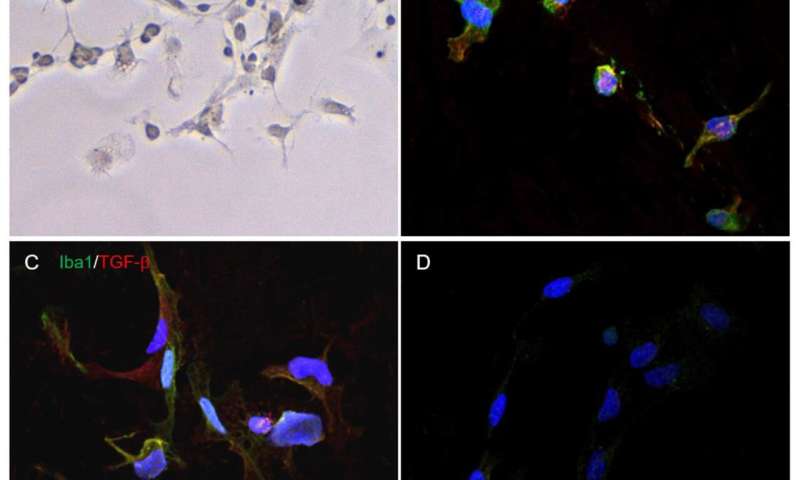Scientists research links between spinal cord injury and immunity

A new paper by OpenLab Gene and Cell Technology saw light in International Journal of Molecular Sciences.
"Spinal cord injury is a serious problem which can lead to a significant reduction in the patient's quality of life. After trauma, many biochemical reactions and cell-to-cell interactions are activated, the results of which determine the possibility of nerve tissue repair and preservation of its functions. The most important participants of these processes are microglia cells—immune cells of the central nervous system," explains Junior Research Associate Elvira Akhmetzyanova.
Employees of the laboratory studied the behavior of microglia cells under conditions of in vitro modeling of spinal cord injury of different severity in various posttraumatic periods (acute, subacute and chronic). It was found for the first time that cells of the brain immune system play a significant role in the processes of inflammation and recovery in severe spinal cord injury.
"As a result of laboratory experiments on rats, we found out that microglia cells can have both anti-inflammatory and protective effects and contribute to the destruction of nerve tissue. Microglia cells are activated during spinal cord injury, i.e. there is an immune response, and its degree directly depends on the severity of the injury. As a result of activation, these cells acquire a neurotoxic or neuroprotective phenotype—there is a process of their polarization. They polarize spontaneously, but usually polarization towards the neurotoxic phenotype occurs to a greater extent, as this is facilitated by the release of proinflammatory molecules by different cells in the epicenter of injury. Activation of microglia cells in the case of acquiring a neuroprotective phenotype promotes neural tissue repair. We, as well as other authors, proved the existence of cells of intermediate phenotype," says Head of OpenLab Gene and Cell Technology Albert Rizvanov.
The researchers found a pattern—the more severe the spinal cord injury, the lower the ability of microglia to divide and destroy foreign particles and damaged cells in all post-traumatic periods. This discovery will help in the development of new approaches to the treatment of spinal cord injury.
"We have yet to find reliable ways to polarize brain immune cells toward a neuroprotective phenotype that will promote neuroregeneration," adds Lead Research Associate, Head of Molecular and Cell Mechanisms of Neural Regeneration Yana Mukhamedshina.
More information:
Severity- and Time-Dependent Activation of Microglia in Spinal Cord Injury, www.mdpi.com/1422-0067/24/9/8294
Provided by Kazan Federal University